Jaguar XJ Review
Jaguar XJ
Over half a year after the official launch, Riyad finally gets behind the wheel of the new Jaguar XJ.
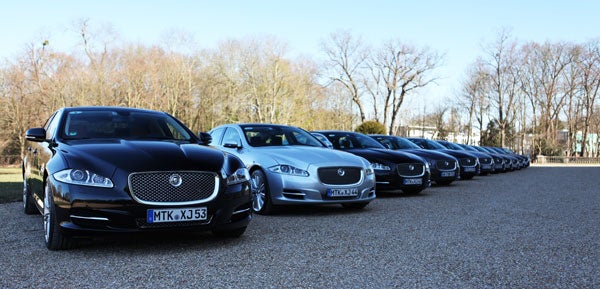
Verdict
Back in July last year I attended a launch event for the new Jaguar XJ and was very surprised by the car that was presented to me. Ever since the launch of the original Jaguar XJ in 1968, the design changes with each iteration have been conservative to say the least. However, with this latest incarnation Jaguar has been what can only be described as radical, and the result is spectacular. 
It’s clear that the new XJ has taken a few design cues from the already successful Jaguar XF, but this is very much a car and design statement in its own right. Although the rear of the car has come in for a degree of criticism, I have to say that I’m a fan of the new design from pretty much every angle. The front looks mean and purposeful, while the side profile is surprisingly sweeping and sporty. Even the slightly less striking rear has grown on me with the LED tail light clusters that wrap up and over the boot line.
There’s no doubt that Jaguar is a company that’s intent on turning around public perception. For a long time Jaguar cars had something of a reputation for being staid, stuck in the past, and slightly dull. However, no one could level such accusations at the modern range of Jaguars – the XK, XF and now the new XJ are modern, bold and cutting edge in their approach. 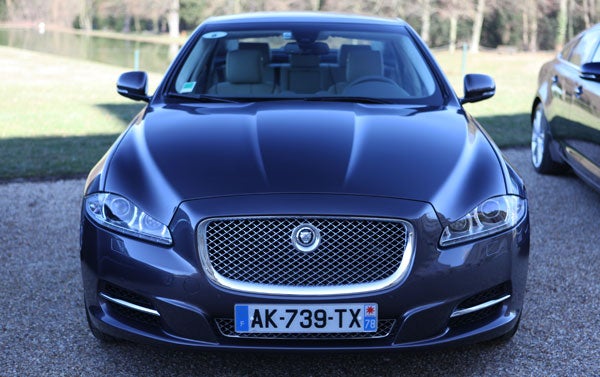
Ian Callum – Director of Design at Jaguar – is one of many at the company to relay the message that the latest Jags have been designed to reaffirm the company as a manufacturer of “modern sporting luxury cars”, and I have to say that Jaguar has achieved that goal, and then some. And if the new XJ is the final piece of that puzzle, it is, without a doubt, a significant piece.
Last week Jaguar invited me out to France to spend a couple of days driving the new XJ. I covered a few hundred miles in various incarnations of the car, and my time spent behind the wheel did little to dampen my enthusiasm for Jaguar’s new flagship. So, if you’ve had your eye on a new BMW 7 Series, or Audi A8, have a read of the next few pages before placing that deposit.
The new XJ will be available with three engine variants, but there’s little doubt the the 3.0-litre V6 diesel will be the biggest seller in the UK. This is the same engine that was in the Jaguar XF that I reviewed last year and it’s an absolute gem. Despite only pumping out 184g/km CO2, the diesel lump pumps out 271bhp and 442lb/ft of torque. That makes the diesel powered XJ good for a 0-60mph sprint of six seconds, which is no mean feat for a car this size.
I spent the best part of a day driving the diesel car, and it felt surprisingly responsive in comparison to the XF I drove last year. Of course it’s worth remembering that despite being a larger car, the XJ is actually lighter than its sibling due to its all aluminium construction – more about that later.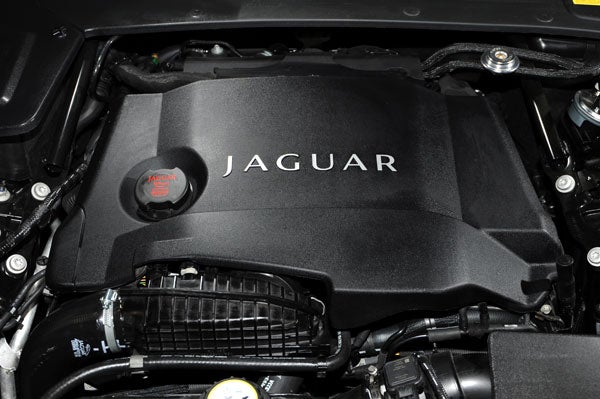 ”’(centre)The V6 diesel will make up the majority of sales in the UK(/centre)”’
”’(centre)The V6 diesel will make up the majority of sales in the UK(/centre)”’
The V6 diesel certainly complements the sleek and stylish design of the XJ, providing a smooth swell of power, that never unsettles the car. There’s usually enough torque on tap for overtaking, but on the whole the XJ cruises with ease at low revs and simply eats up the miles while returning an impressive 40mpg. It’s not surprising that Jaguar predicts that 85 per cent of XJs in the UK will be specced with diesel power.
Sitting at the opposite end of the scale is a 503bhp supercharged 5.0-litre V8 petrol engine, that is also resident in the XFR and the Jaguar XKR that I looked at a few months back. Interestingly, Jaguar has chosen not to extend the R branding to the XJ, so rather than an XJR moniker, the top of the range XJ is dubbed the Supersport.
The Supersport will crack 60mph in 4.7 seconds, which is incredibly quick for what is, essentially, a luxury saloon car. As with the XKR, the V8 sounds sublime and Jaguar has done a great job of eradicating the whine that afflicts many supercharged engines. Although the cabin of the XJ is a supremely serene place to be, when you put your foot down in the Supersport you are greeted with a satisfying roar from the V8, followed by a wave of acceleration that launches the car towards the horizon. ”’(centre)The supercharged V8 gives the XJ enough grunt to scare Porsche drivers(/centre)”’
”’(centre)The supercharged V8 gives the XJ enough grunt to scare Porsche drivers(/centre)”’
Of course the Supersport can’t compete with the diesel when it comes to fuel economy, but 23.4mpg figure that Jaguar quotes is pretty respectable considering that this is a large car pumping out over 500bhp. That said, if you enjoy your driving, I imagine that you’ll rarely see that number, since the power under your right foot can be downright addictive, and every time you nail the throttle you can almost see the fuel gauge dropping.
The third engine option sits between the two above, and is basically a naturally aspirated version of the Supersport lump. Without the forced induction the 5.0-litre V8 petrol engine will produce a not insignificant 385bhp, but with a CO2 figure of 264g/km it still falls into the very top road tax brand, while turning in only marginally better fuel economy at 24.9mpg. 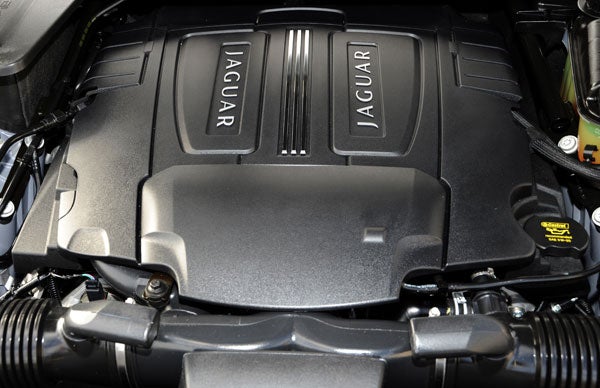 ”’(centre)The naturally aspirated V8 engine still pumps out a respectable 385bhp(/centre)”’
”’(centre)The naturally aspirated V8 engine still pumps out a respectable 385bhp(/centre)”’
On the plus side, the naturally aspirated V8 powered XJ has a base price that’s around £23,000 lower than the Supersport, so there will no doubt be buyers who want a petrol car, but can’t stump up the £87,455 for the Supersport. I have yet to drive the naturally aspirated V8 engine, so I can’t really say how it compares to the diesel below it or the supercharged V8 above it, but imagine it will sound as intoxicating as the Supersport, but without the mind bending levels of acceleration.
There’s no getting away from the fact that the new XJ is the biggest design departure from Jaguar in recent history, and has left behind the shape that has been synonymous with the XJ for over 40 years. The most obvious change is the coupé style sweeping lines that flow across the car – gone is the distinct bonnet, cabin and boot design that has been the norm for Jaguar’s luxury saloon for decades. 
The materials used in construction are as modern as the car’s lines. The all-aluminium structure on the new XJ is completely weld free, with the whole car held together using cutting edge bonding processes and riveting. In fact, the previous XJ was also constructed from aluminium, but it simply didn’t have the modern design to go with its modern construction.
The use of aluminium has also allowed the XJ to be a reasonably green car, using 50 per cent of recycled aluminium in its production. Around 85 per cent of the XJ is recyclable at the end of the car’s life too, so if you want to salve your environmental conscience after opting for that supercharged 5.0-litre V8, you can take comfort in the fact the recycling attributes of your new car!
The outside of the XJ may be radical, but it’s the inside where an owner will be spending most of their time, and here Jaguar has excelled itself. The new XJ has one of the most beautifully designed cabins I’ve ever seen, and definitely holds true to Callum’s ideal of a modern, sporting luxury car. Sitting in the driver’s seat, it felt as though the cabin was wrapped around me, with everything exactly where I’d want it to be.
The array of materials on offer is dizzying, but opting for carbon or piano black inlays really does add to the modern look of the cabin, especially with the line of the inlays running around the whole of the cabin, surrounding the front occupants. There’s plenty of aluminium on display too, with the highlight being Jaguar’s trademark gear selector dial. However, even the centres of the round air vents are metal rather than plastic, and add to the quality feel whenever you touch them. 
Despite the low roof line, the cabin in the XJ never feels dark, thanks mainly to the panoramic glass roof that stretches from the top of the windscreen all the way back to the rear passengers. Even with black leather interior (which would be my preference), the light flooding through the roof and metal highlights ensure that the cabin never looks dull or claustrophobic. 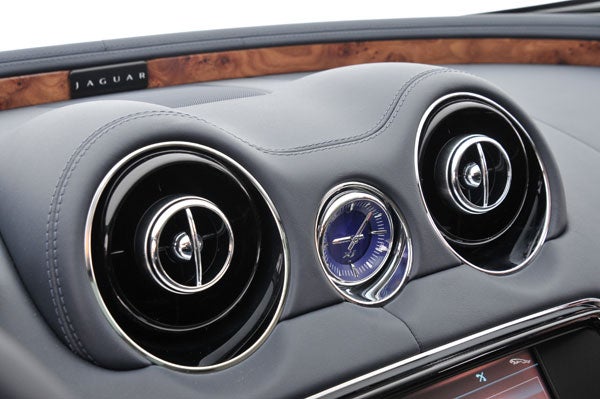
The blue lighting theme that was seen in the XF is carried over into the XJ with even better effect. Although the luminous blue, analogue clock wasn’t to everyone’s taste, I quite liked it, especially at night.
The new XJ isn’t all about great design, Jaguar has also squeezed some seriously cutting edge technology into its flagship car. Top of that list for me is that dashboard, which features no physical dials whatsoever. Although many manufacturers have tried doing away with analogue dials in favour of a digital dash, Jaguar has created a truly virtual dashboard.
Instead of a traditional instrument cluster, the XJ sports a 12.3in LCD screen, which can, in theory at least, display anything you’d like. Since its main duty is to be an instrument panel there are some limitations on what it can do – primarily this means that the speedometer must be displayed at all times, as is the law in the UK. The speedo sits at the centre of the virtual cluster, which means that there are two other dials/sections that can offer a little more flexibility.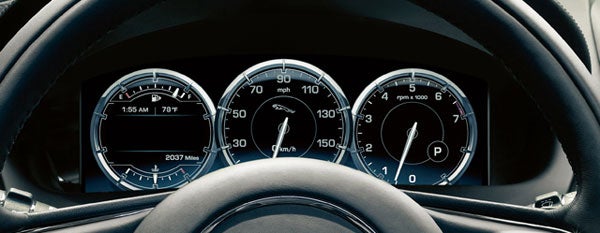
The right side of the dash can be used to navigate the cars extensive menus without having to interact with the centre console screen. Since the steering wheel has more controls than you can shake a stick at, there’s almost no reason to ever move your hands away from the wheel, or look anywhere but straight ahead. Obviously you don’t really want to be delving too deep into the car’s menus while you’re driving, but it’s nice to have everything under your thumbs. 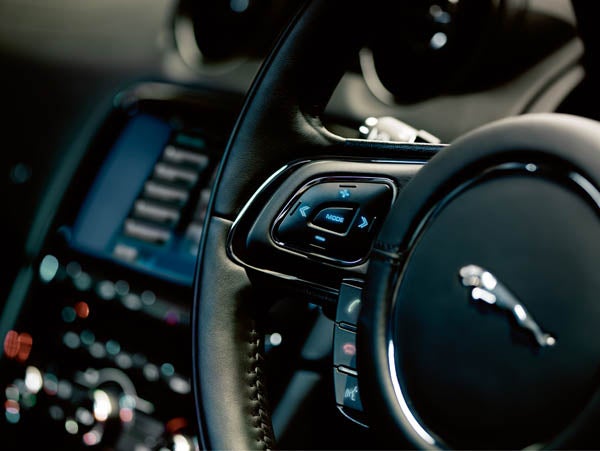
The left side of the dash can also adapt to your needs, and this is highlighted when you use the car’s satellite navigation system. When navigation is activated, the left side of the dash will periodically display the map and indicate where you’re supposed to be going. It’s a step up from the usual arrow or roundabout symbol that most other cars offer in their dash display, and because the map isn’t there constantly, it’s not a distraction to the driver.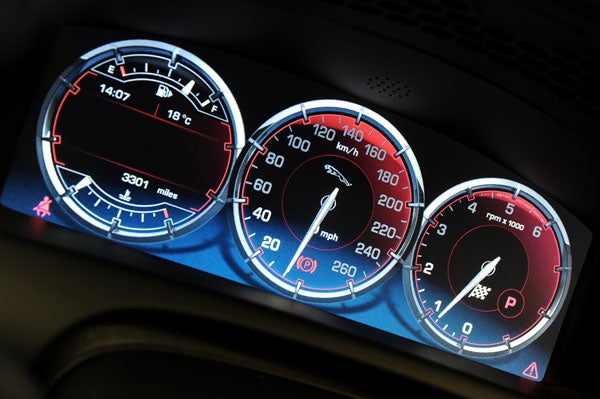
Another nice feature of the virtual dash is the way that the numbers surrounding the needle’s current position are highlighted, making it easy to check your speed or revs with the briefest of glances. Oh, and the way the dials turn red when the Dynamic mode is engaged is undoubtedly cool, despite being nothing but eye candy.
But the best thing about the virtual dashboard in the XJ is just how damn good it looks. I had fully expected the display to be hard to read in direct sunlight, or from an angle, but it simply isn’t. Even if you wear polarized sunglasses (as I do), the virtual dash is still pin sharp and easy to see. That in itself is quite an achievement, since polarized lenses can often play havoc with LCD displays, making it hard to read anything.
The dashboard isn’t the only innovative LCD screen in the XJ either as the 8in centre console display has a neat trick up its sleeve too. Like the dashboard, the central screen is clear and crisp, and is not affected by polarized lenses either. But this screen’s real party piece is its dual view feature.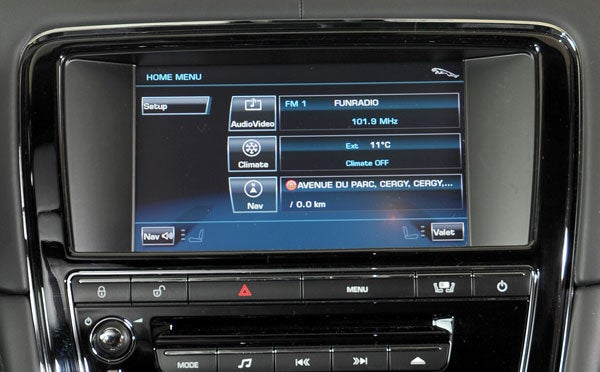
The central screen is designed so that the driver and the passenger can be looking at two completely different things. The idea is that while the driver has got the sat-nav up on the screen, the passenger can be watching a movie. What you’ve got is, essentially, two different screens that make up alternate columns of pixels, which are then angled towards either the passenger or the driver. The result being that each occupant can only see the lines of pixels that are angled towards them.
Of course you don’t have to use dual view, and for the most part you’ll probably leave the same display viewable from both sides, allowing both driver and passenger to access the car’s plethora of infotainment options. Navigating the system is simple with a full touch-screen interface. The menu structure is similar to that seen in the XF and XK, but slightly more advanced.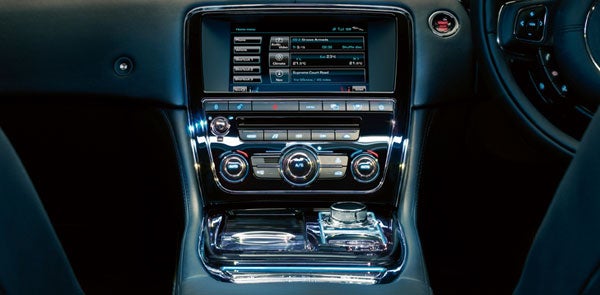
Everything is a few screen taps away, whether that be deciding what music source you want to listen to, adjusting the climate control, entering a destination in the sat-nav, or warming up the heated seats.
The navigation system worked flawlessly while I was trekking around France in the XJ, giving clear and well timed instructions, while the map display in the dash helped ensure that I never missed a turning. Unfortunately I can’t testify how well it copes with UK roads, but considering that the system I used in previous Jaguars was excellent, and offered full seven digit postcode support, I expect the XJ to be at least as good.
Here the XJ really takes the fight to the competition, with an in-car entertainment system that is, quite simply superb. If you’ve read my previous report on the Jaguar XKR you’ll be well aware of just how good the 525W Bowers and Wilkins sound system was, so good in fact, that I considered it to be the best factory fitted in car sound system available – but not anymore. 
With the new XJ, Jaguar and Bowers and Wilkins went back to the drawing board to develop a completely new system and the results are staggeringly good. For a start, the system in the XJ has a little more power than the one in the XKR, and when I say a little more power, I actually mean over twice as much! Bowers and Wilkins have managed to squeeze 1,200W of power and 20 speakers into the new XJ (standard in the Portfolio and Supersport models), all configured to produce the most convincing and detailed soundstage possible.
The sound system in the XJ has been tuned to take best advantage of the cabin acoustics, something that is borne out by the fact that the long wheel base car has a different speaker configuration to the short wheel base version. And it’s that attention to detail that shines through as soon as you start listening – Pink Floyd’s Dark Side of the Moon has never sounded so good in a car!
Of course the XJ can playback both live TV and DVD movies, so it comes as no surprise that the sound system will also decode Dolby ProLogic II soundtracks for that in-car surround sound experience. And you can spec 8in LCD screens mounted in the front seat headrests so that the rear passengers can kick back and watch a movie while being chauffeured to their destination.
There’s no shortage of audio sources either. You can play CDs, or you can rip them straight to the 30GB hard disk in the car – music is encoded as uncompressed WAV files to ensure ultimate sound quality. There’s also the option to connect up a USB device or an iPod, all of which is controlled with relative ease via the infotainment system.
Jaguar has created something very special with the new XJ and gone some way to dispelling many preconceptions that have plagued the brand for a good while. The design melds both modern lines with classic Jaguar features, resulting in a brutishly handsome luxury saloon that’s as much about the driver as it is about the passenger.
The problem with the previous XJ is that it felt as if it had been built for the back seat passengers, with this new model it’s just as luxurious in the back, but it’s an absolute dream in the driver’s seat. Hammering around the French countryside in a 503bhp XJ Supersport is a memory that will bring a smile to my face for some time. Switch the car into the Dynamic setting and you’ll feel the seatbelt pull you tighter into the seatback, you’ll notice the throttle response sharpening up, and you’ll marvel at how well the chassis engineers have managed to control the substantial mass of this car as you throw it around a challenging set of bends. 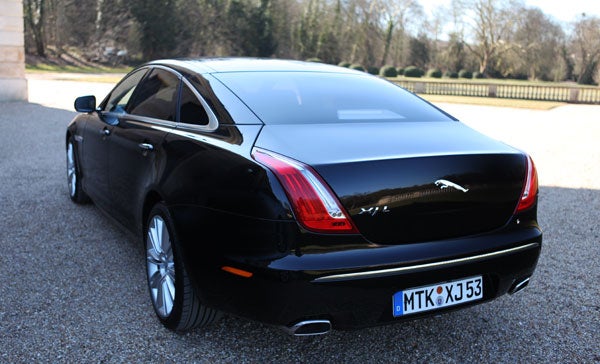
But even if you’re not going flat out, even if you’re driving the diesel version rather than the crackers 5.0-litre supercharged car, the XJ is a sublime place to be. If someone asked me to suggest a car in which four people could tour Europe for a week, the new XJ would be high, if not at the top of my list.
The icing on the cake is the technology showcase that separates this car from its rivals. The LCD screen that acts as a virtual dashboard is a triumph of style and substance, the dual view central display is a wonderful idea that I’m sure the competition will be adding to their arsenal in due time, and the 1,200W Bowers and Wilkins sound system is far and away the best in car audio solution I’ve ever heard.
Even the price is pleasantly surprising, with the 3.0-litre diesel in Luxury spec kicking off at £53,775. Of course if you want to pull out all the stops and go for a Supersport you’ll be knocking on the door of £90k, but even then, the comparable BMW 760 would cost you £10k more.
During his presentation Ian Callum said “Nobody needs a Jaguar, you have to want one”, and I think there will be a lot more people wanting a Jaguar once they sit inside the new XJ.
(centre)”’If you’re a fan of vintage Jags, have a look at some of the metal that was wheeled out”’(/centre)
 ”’(centre)The original 1968 Jaguar XJ(/centre)”’
”’(centre)The original 1968 Jaguar XJ(/centre)”’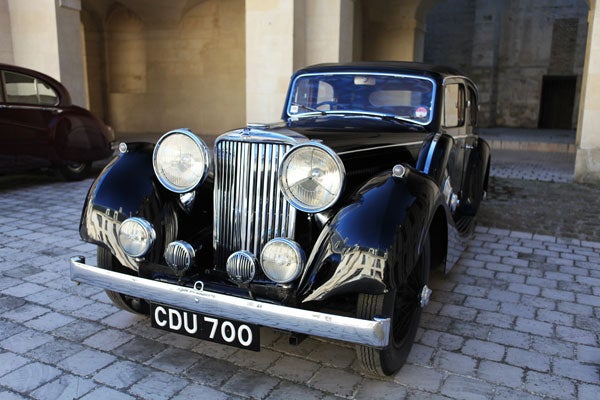 ”’(centre)A 1937 Jaguar SS(/centre)”’
”’(centre)A 1937 Jaguar SS(/centre)”’ ”’(centre)A 1955 Jaguar MkVII(/centre)”’
”’(centre)A 1955 Jaguar MkVII(/centre)”’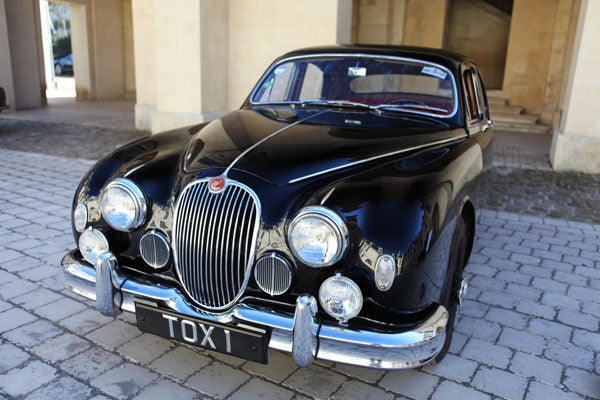 ”’(centre)A 1958 3.4-litre Jaguar Saloon(/centre)”’
”’(centre)A 1958 3.4-litre Jaguar Saloon(/centre)”’
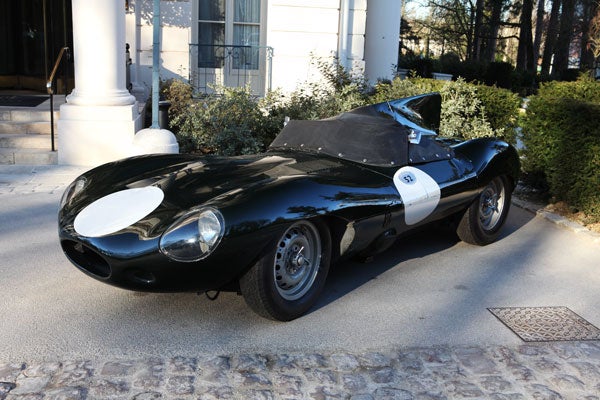
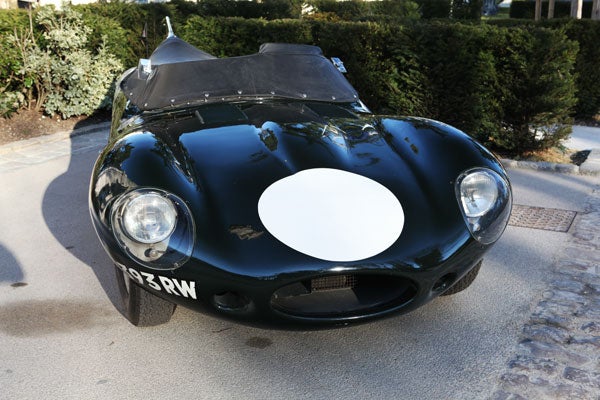
 ”’(centre)The Le Mans winning Jaguar D-Type – I want one!(/centre)”’
”’(centre)The Le Mans winning Jaguar D-Type – I want one!(/centre)”’


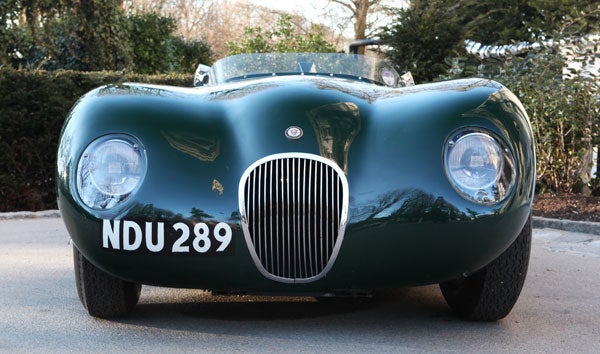 ”’(centre)The C-Type also took the chequered flag at Le Mans and is an even rarer sight than its younger sibling.(/centre)”’
”’(centre)The C-Type also took the chequered flag at Le Mans and is an even rarer sight than its younger sibling.(/centre)”’

